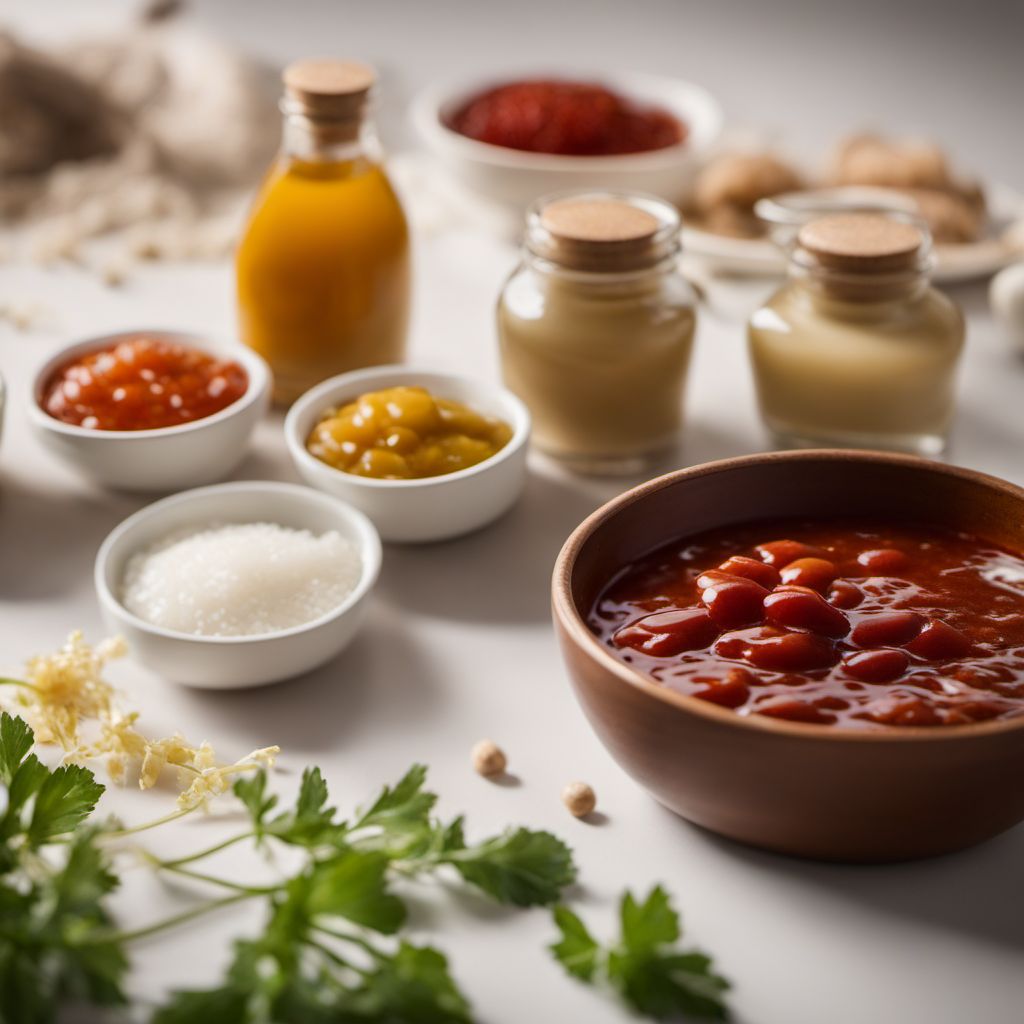
Ingredient
Sauces from fermented/hydrolised sources and similar
The Umami Boost: Unveiling the World of Fermented Sauces
Sauces from fermented or hydrolyzed sources, such as soy sauce, fish sauce, and Worcestershire sauce, are made through a process of fermentation or enzymatic hydrolysis. They have a distinct umami flavor that is savory, rich, and slightly salty. The texture of these sauces can vary from thin and watery to thick and syrupy, depending on the specific type.
Origins and history
Fermented and hydrolyzed sauces have a rich history that dates back thousands of years. Soy sauce, for example, originated in China around 2,500 years ago and spread to other Asian countries. Fish sauce has been used in Southeast Asian cuisines for centuries, while Worcestershire sauce has its roots in British cuisine. These sauces have become essential ingredients in their respective culinary traditions and are now enjoyed worldwide.
Nutritional information
Sauces from fermented or hydrolyzed sources are low in calories but can be high in sodium. They also contain small amounts of protein and essential amino acids. The nutritional content may vary depending on the specific sauce.
Allergens
Some fermented sauces, like soy sauce and fish sauce, may contain allergens like wheat or fish. It is important to check the ingredient list and labels for any potential allergens before consuming these sauces.
How to select
When selecting fermented or hydrolyzed sauces, look for reputable brands that use high-quality ingredients and traditional production methods. Opt for sauces that are naturally brewed or fermented for a more authentic flavor. Check the ingredient list to ensure there are no artificial additives or preservatives.
Storage recommendations
To maintain the freshness and quality of fermented or hydrolyzed sauces, store them in a cool, dark place, away from direct sunlight. Once opened, refrigerate the sauces to prolong their shelf life. It is important to follow the manufacturer's instructions for storage and usage.
How to produce
Producing fermented or hydrolyzed sauces at home can be a complex process that requires specific ingredients and equipment. It is recommended to purchase these sauces from trusted sources or specialty stores.
Preparation tips
Fermented and hydrolyzed sauces can be used in a variety of dishes to enhance their flavor. Soy sauce is commonly used in Asian cuisines for stir-fries, marinades, and dipping sauces. Fish sauce is a staple in Southeast Asian dishes like Thai curries and Vietnamese pho. Worcestershire sauce is often used in British and American recipes, including marinades, gravies, and Bloody Mary cocktails.
Culinary uses
Fermented and hydrolyzed sauces are widely used in various cuisines around the world. They are essential ingredients in Asian dishes like sushi, pad Thai, and bibimbap. These sauces are also commonly used in Western cuisines, particularly in recipes that call for a savory and umami-rich flavor.
Availability
Fermented and hydrolyzed sauces are available in most grocery stores and supermarkets, as well as specialty Asian or international food markets.
More ingredients from this category

British islands brown sauce
The Savory Condiment: British Islands Brown Sauce

Teriyaki sauce
The Art of Teriyaki

Shrimp sauce
The Savory Elixir of the Sea

Bean curd sauce
Creamy Delight: Exploring the Versatility of Bean Curd Sauce

Oyster sauce
The Umami Elixir: Unveiling the Secrets of Oyster Sauce

Fish sauce
Umami Elixir from the Sea

Soy sauce
The Umami Elixir

Sweet and sour sauce
Tangy Delight